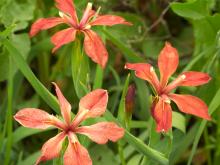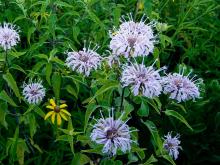Wildflowers, Grasses and Other Nonwoody Plants
Media

Species Types
Scientific Name
Iris fulva
Description
This attractive, copper-colored iris is gaining in popularity as a garden plant even though its numbers are declining in the wild. Like many other native plants, copper iris is hardy, low-maintenance, and has few pest or disease problems.
Media

Species Types
Scientific Name
Festuca arundinacea
Description
You’ve seen it a million times, now learn to identify it! Technically an exotic invasive plant, tall fescue is practically everywhere, from lawns to levees, and from pastures to (unfortunately!) prairies.
Media

Species Types
Scientific Name
Monarda fistulosa
Description
Sometimes called beebalm, wild bergamot (or horsemint) is a native mint with a long history as a valued Missouri herb. Some people make tea from it, but most of us enjoy its large, colorful flowers.
See Also
About Wildflowers, Grasses and Other Nonwoody Plants in Missouri
A very simple way of thinking about the green world is to divide the vascular plants into two groups: woody and nonwoody (or herbaceous). But this is an artificial division; many plant families include some species that are woody and some that are not. The diversity of nonwoody vascular plants is staggering! Think of all the ferns, grasses, sedges, lilies, peas, sunflowers, nightshades, milkweeds, mustards, mints, and mallows — weeds and wildflowers — and many more!





















